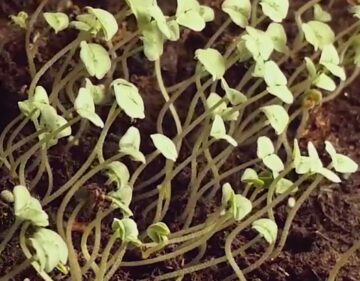Asher Elbein in Quanta:
 Since ancient times, plants’ ability to orient their eyeless bodies toward the nearest, brightest source of light — known today as phototropism — has fascinated scholars and generated countless scientific and philosophical debates. And over the past 150 years, botanists have successfully unraveled many of the key molecular pathways that underpin how plants sense light and act on that information.
Since ancient times, plants’ ability to orient their eyeless bodies toward the nearest, brightest source of light — known today as phototropism — has fascinated scholars and generated countless scientific and philosophical debates. And over the past 150 years, botanists have successfully unraveled many of the key molecular pathways that underpin how plants sense light and act on that information.
Yet a critical mystery has endured. Animals use eyes — a complex organ of lenses and photoreceptors — to gain a detailed picture of the world around them, including the direction of light. Plants, biologists have established, possess a powerful suite of molecular tools for measuring illumination. But in the absence of obvious physical sensing organs like lenses, how do plants work out the precise direction from which light is coming?
Now, a team of European researchers has hit upon an answer.
More here.
